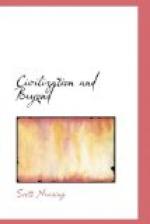Monopoly capitalist society assumes that productivity, wealth and fire-power, effectively co-ordinated under competent authority, will guarantee survival and perhaps win supremacy. Beginning its life in one of the backward areas of the planet, the Soviet Union has met all of these tests by converting itself into a first class world power. Its productivity is second only to that of the United States. In wealth it stands second among the nations. Its fire power has carried the Soviet Union to victory in civil and international war. Its ruling oligarchy—the Soviet Communist Party—has maintained its authority through the stresses of domestic strife and major international conflict. In terms accepted by the existing free-for-all West, the Soviet Union is an established world power.
Through the first three decades of its existence the Soviet Union was the only government avowedly engaged in building a socialist rival to monopoly capitalism and determined to replace capitalism as the dominant planet-wide social system. After 1943 it was joined by a dozen other European, Asian and American countries, dedicated like the Soviet Union to the task of building socialism. In addition to these dozen countries, several others such as India, Burma, Indonesia, Ceylon, Ghana and Libya, declared their intention of building socialism by legal, and gradual stages. Almost all of the countries busied with socialist construction were in East Europe and Asia. The countries building toward socialism were more widely scattered, but by and large they were Eurasian.
From 1919 to 1943 socialist construction was directed, at least in theory, by the Communist International with headquarters in Moscow—the “general staff of the World Revolution”. Under war pressure the Communist International was dissolved in 1943. No equally inclusive international socialist authority has since been established.
World revolution is not confined to the Old World of Africa—Asia—Europe. It is widely prevalent in the Americas where it can claim a certain priority. Outstanding among colonial uprisings of modern times was the rebellion of the British colonies of North America, from 1776 to 1783. Even more widespread was the rebellion of the Spanish, Portuguese and French colonies of Central and South America which spanned most of the nineteenth century and extended on into the twentieth. Russian Bolsheviks held the headlines on revolutionary activity from 1917 to 1943 but it should not be forgotten that one of the most prolonged and thorough-going revolutions of the present century gripped Mexico from 1910 to 1917. At the beginning of this period Mexico was a political semi-dependency of the United States. It was semi-feudal, with a large population of Amerindians and a pre-industrial economy. Foreign capitalists and entrepreneurs, including those from the United States, played a leading role in the country.
Mexico’s 1910-1917 revolution was prolonged. It was also radical, up-rooting many aspects of its old social pattern, speeding up the bourgeois revolution, and preparing the way for a Mexican form of populism and a Mexican foretaste of a proletarian revolution, initiated, led and manned by Mexicans.




